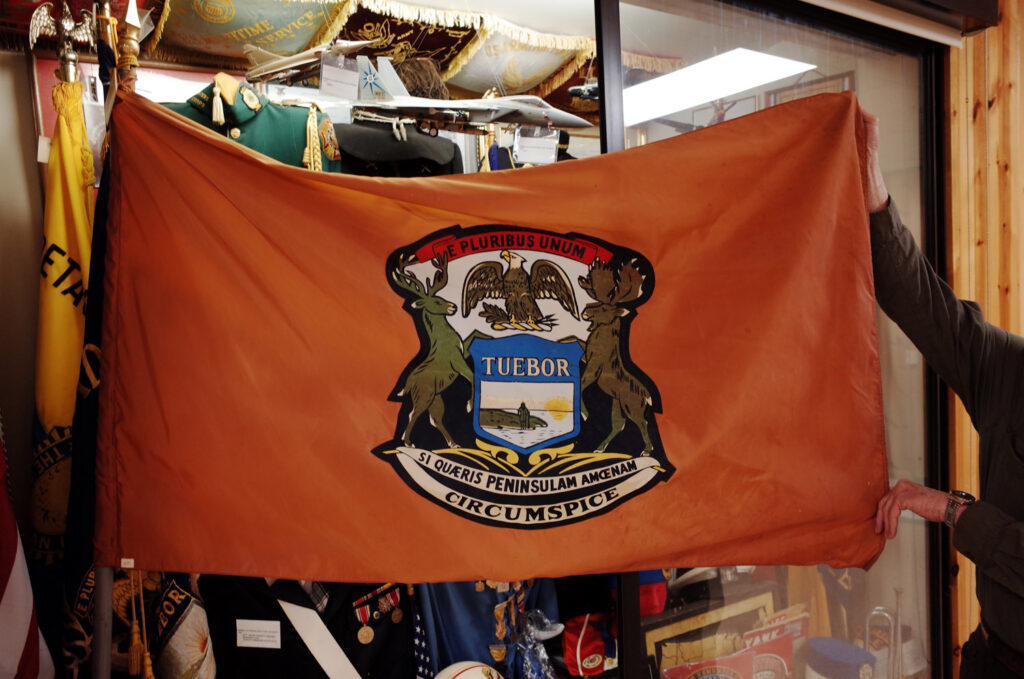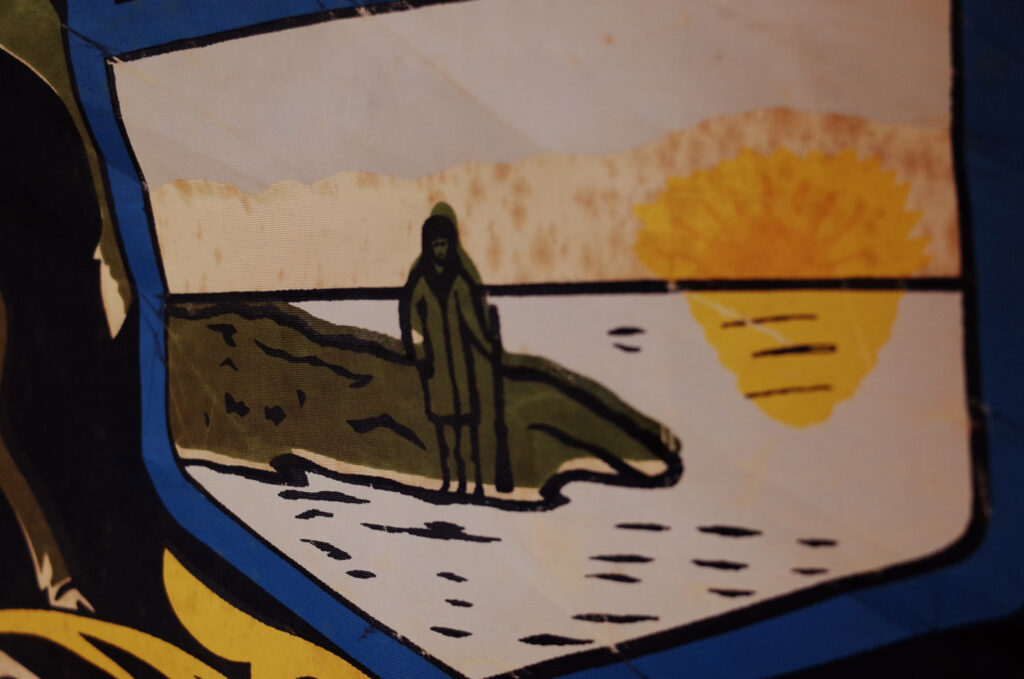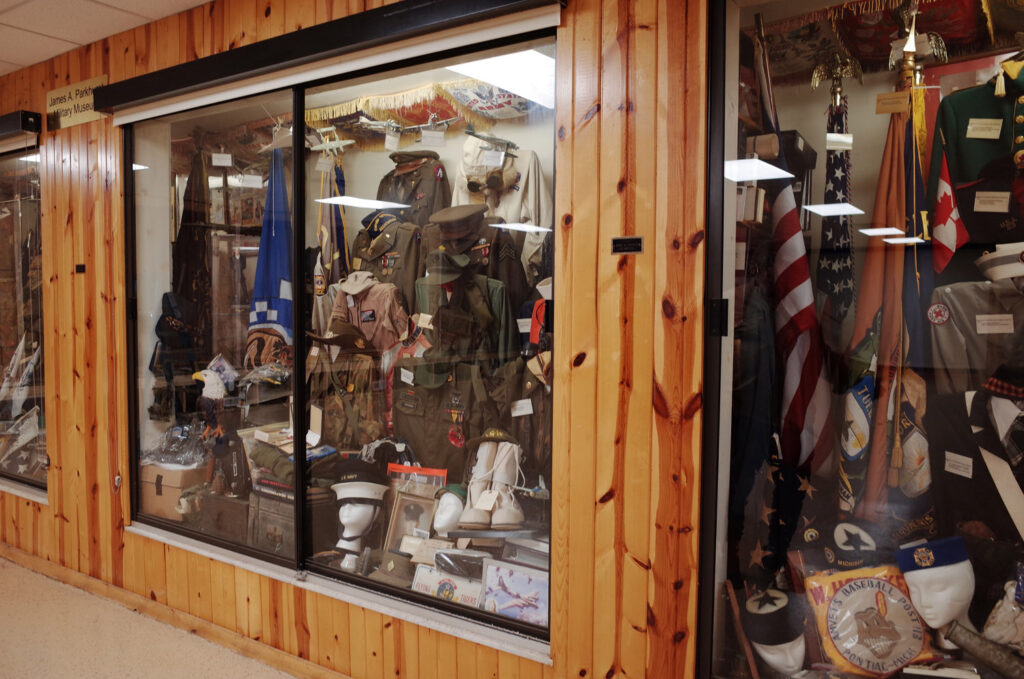Oxford — In the American Legion in Oxford, there is a copper-colored state flag, a striking aberration from Michigan’s lake-blue banner. It may be the only one in existence.
How did an emblem of the Upper Peninsula’s statehood movement end up here?
Jim Parkhurst, curator of the American Legion’s museum, said the flag is from the 1920s and was created by state legislators who wanted to create a separate state out of the Upper Peninsula.
He said about 10 to 15 years ago, he got a call from the Detroit Edison Company, which had a closed an American Legion only for company employees. They asked if the Oxford post wanted the flag for their museum.

“This was designed around 1920 or 1921,” Parkhurst said. “A legislator by the name of Crane and some other representatives out of the U.P. designed this flag and they took it to Lansing.”
“They wanted to make the Upper Peninsula a separate state,” Parkhurst said. “That’s the reason they created this flag.”
Parkhurst said the emblem in the middle looks similar to the standard state flag, but the pioneer that stands in the middle is standing on an island of bronze instead of green and has his right hand in his pocket instead of waving.

Parkhurst said historians from the state archives wanted to take the flag from the American Legion. They took pictures and left empty-handed. And so, the flag remains in Oxford’s James A. Parkhurst Military Museum, named after its curator.
“They don’t have this flag in Lansing,” Parkhurst says. “It is a rare flag.”
So rare, in fact, there’s no information about it. There are no mentions of it in the state archives, and there are no mentions of a Crane that I can find on the legislature’s tally of legislators and sessions, although the official website admits “search results may not reflect 100% of the legislators.”
It might have been typical for the Upper Peninsula’s legislators to be left off the official records. Maybe that was a reason representatives from the U.P. wanted to leave. But given the record, it’s impossible to know.
If the flag is geniune, it’s a relic in the long history of Yooper statehood movements that began shortly after Michigan entered the union.

The statehood deal of 1837 was that Michigan would give up the “Toledo strip,” which Michigan and Ohio were preparing to fight over, and receive the uncharted Upper Peninsula in exchange.
By 1855, Yoopers wanted to become their own state and call it the “State of Superior” or just “Superior.” Early settlers had realized there was quite a bit of copper under the earth.
In the coming decades, newspaper publishers pushed the idea of U.P. secession.
Then in the 1960s and ’70s, lawyer Ted Albert and state Rep. Dominic Jacobetti, a Negaunee native, led perhaps the most concerted movement for a 51st state.
Instead of copper, the main income stream for the region would be legal gambling, and several counties in the U.P. and Wisconsin passed resolutions to put the issue before voters.

State Rep. Robert Davis and Jacobetti asked then Attorney General Frank Kelley about the process for obtaining statehood. He responded in an 1976 opinion that for a new State of Superior to exist, four things must occur:
- The legislature of the State of Michigan would first have to agree to recession of the Upper Peninsula;
- Residents of the area of the proposed state would have to consent to the creation of a new state;
- Representatives of the area of the proposed state would then have to adopt a constitution and petition Congress for admission to the Union; and
- Congress would then have to pass by majority vote an act admitting the new state into the Union.
In May 1978, Jacobetti introduced House Bill No. 6115, a “bill to separate the Upper Peninsula from the state of Michigan.”
Obviously, their efforts failed. We’re still connected by the Mackinac Bridge and the original, federally drawn borders.
Since then, there has been little mention of a new State of Superior. But the push for Yooper independence comes once every other generation or so. We’re due for another attempt at statehood any time now.
The copper-colored flag furled behind the glass in the Oxford American Legion is a reminder that the Upper Peninsula’s rugged spirit can hide for years but will never fully disappear.
Brendan Clarey is deputy editor of Michigan Enjoyer.




